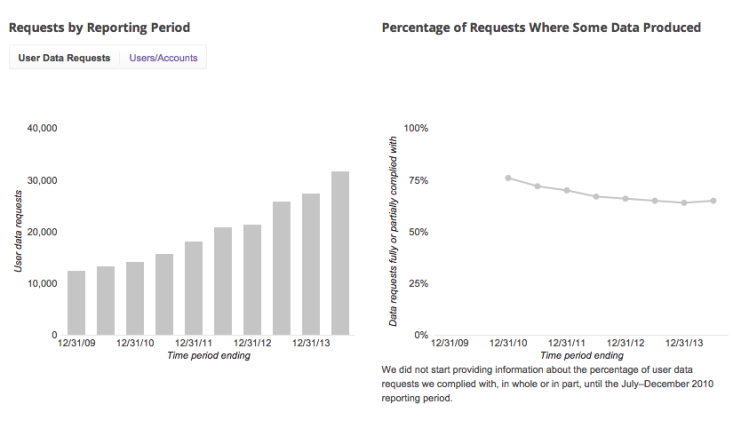Google has released its latest transparency report on government requests for data, claiming a 150 percent surge in demand for more information.
“We’ve seen a 15 percent increase since the second half of last year, and a 150 percent jump since we first began publishing this data in 2009. In the U.S., those increases are 19 percent and 250 percent, respectively,” concludes the latest report, written by Google’s legal director Richard Salgado.
Broadly speaking, the transparency report tells us when a government requests data for users’ email, personal information, or other account information.
Google’s transparency reports are more of an attempt to bring attention to government surveillance than to expose new revelations about surveillance. The reports tell us the broad number of requests, but not what information was given, whether they were legally reasonable, or the other ways the spy agencies can collect data.
“The numbers themselves don’t tell us very much at all,” Electronic Frontier Foundation Staff Attorney Nate Cardozo told me about a previous report. “These transparency reports only represent a small portion of what the NSA is doing to get data out of these companies. A lot of what the NSA is doing is without the company’s knowledge.”
For instance, the National Security Agency has been supposedly tapping underwater Internet cables to spy on all information indiscriminately. These reports can’t tell us about this kind of spying because it doesn’t come from an official request.
In other instances, a single request can cover a broad range of users. The NSA’s request that Verizon hand over all phone call metadata was a single court order, which would show up on a transparency report as a single request, even though it affected millions of customers.
On the other hand, sometimes an agency may issue multiple orders for the same individuals or groups. In this case, more requests are made but fewer users are affected.
Readers may notice that in the graph above on the right, the percentage of requests where some information was produced has actually decreased, from 76 to 65 percent. This could mean that Google is becoming more successful at fighting requests.
It also could just mean that there are more local bureaucrats finding things they don’t like about themselves online and making silly requests that Google will never have to comply with.
So, while these reports are important to monitor, the numbers themselves mean very little.
VentureBeat's mission is to be a digital town square for technical decision-makers to gain knowledge about transformative enterprise technology and transact. Learn More

